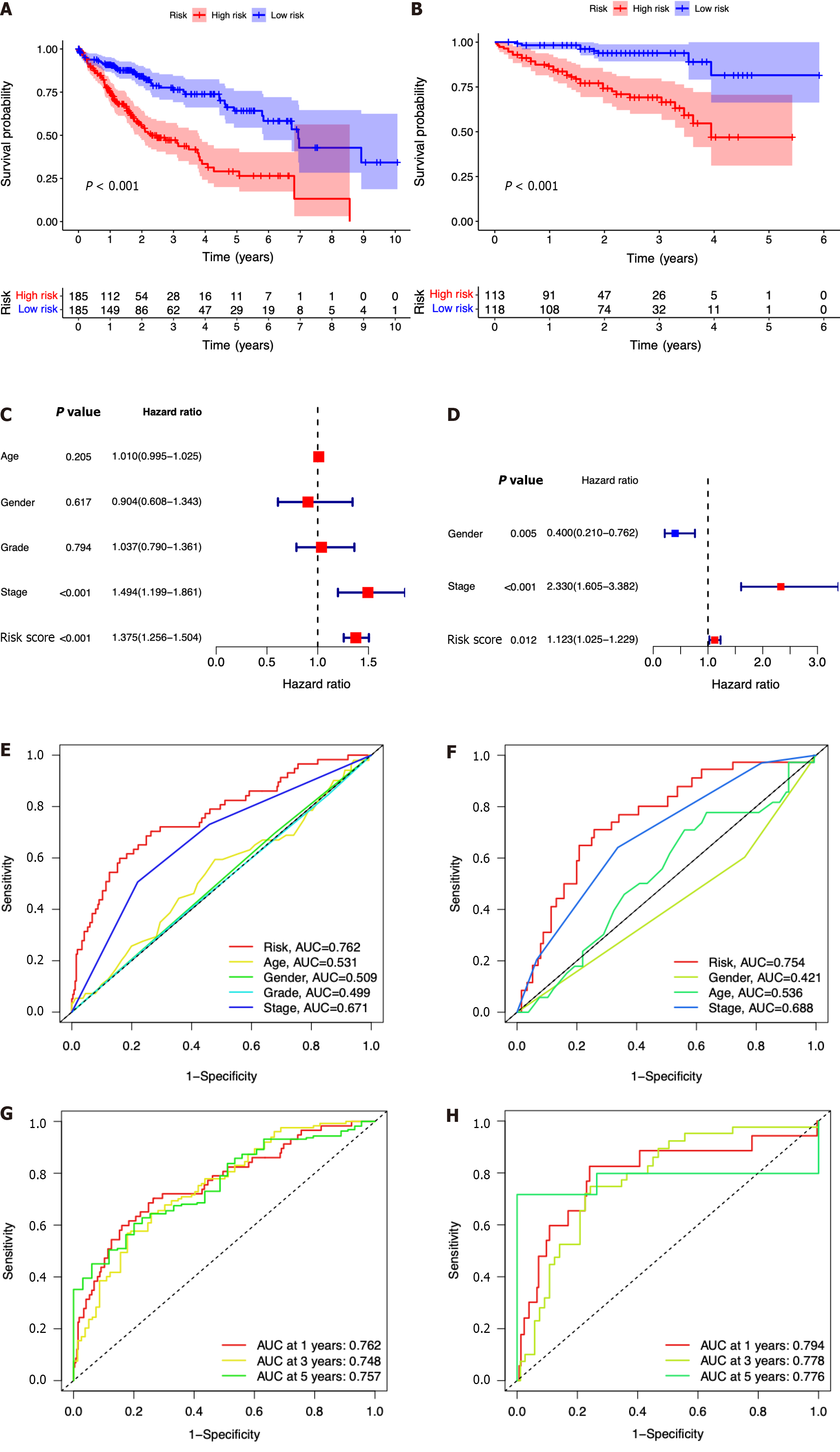Copyright
©The Author(s) 2024.
World J Clin Oncol. Feb 24, 2024; 15(2): 243-270
Published online Feb 24, 2024. doi: 10.5306/wjco.v15.i2.243
Published online Feb 24, 2024. doi: 10.5306/wjco.v15.i2.243
Figure 4 The seven-gene prognostic signature demonstrates high predictive power for overall survival in patients with hepatocellular carcinoma.
A: Kaplan-Meier curves for overall survival (OS) of patients in the high- and low-risk groups in The Cancer Genome Atlas (TCGA) cohort; B: Kaplan-Meier curves for OS of patients in the high- and low-risk groups in the immune cell-related gene (ICRG) cohort; C: Prognosis-related variables screened by multivariate Cox regression were analyzed in the TCGA cohort; D Prognosis-related variables screened by multivariate Cox regression were analyzed in the ICGC cohort; E: Area under the time-dependent ROC curves (AUC) for different clinical features in the TCGA cohort; F: AUC for different clinical features in the ICGC cohort; G: AUC of the prognostic model for survival at different time points in the TCGA cohort ; H: AUC of the prognostic model for survival at different time points in the ICGC cohort.
- Citation: Li MT, Zheng KF, Qiu YE. Identification of immune cell-related prognostic genes characterized by a distinct microenvironment in hepatocellular carcinoma. World J Clin Oncol 2024; 15(2): 243-270
- URL: https://www.wjgnet.com/2218-4333/full/v15/i2/243.htm
- DOI: https://dx.doi.org/10.5306/wjco.v15.i2.243









